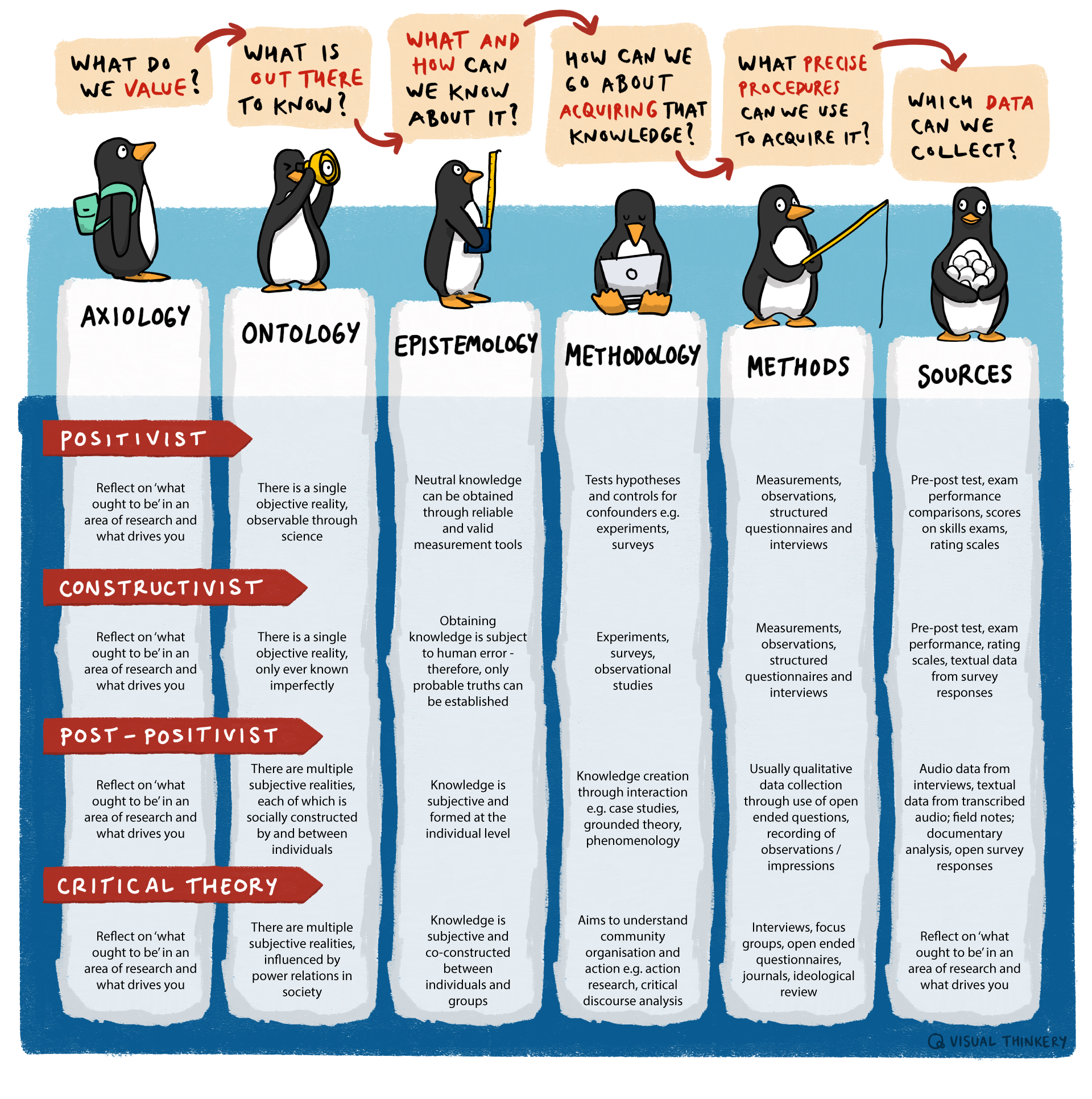Research Design
By this point we hope you have a sense of how research methods can take us on a journey, working from ideas and philosophical speculation to a specific set of actions that can generate new knowledge. All of these elements need to inform the design of research. It’s often helpful to keep in mind the ultimate goal of your project so you can design your specific activity around reaching this point.
Figure 8. Progression through the Research Process (based on Brown & Dueñas, 2020)
For more on the research design process, see the following: Ajzen (1991); Akkerman & Bakker (2011); Anderson (2013); Armellini & Nie (2013); Bloor & Wood (2006); Brown & Wyatt (2010); Casadeval & Fang (2016); Clements & Pawlowski (2012); Conole (2013); Cox, & Trotter (2017); Crotty (1998); Davis & Sumara (2006); Design Thinking for Educators (2013); Denzin (2017); Gray (2014); Guskey (2002); Kivuna & Kuyini (2017); Lefever, Dal & Matthíasdóttir (2007); Leong & Austin (2006); Manen (2018); Maxwell (2004); Maxwell (2012); Maxwell (2013); McKenney & Reeves (2012); Miles & Huberman (1999); Mills, Van de Bunt, & De Bruijn (2006); Munafò et al., (2017); Patterson & Williams (1998); Quiñones, Supervielle & Acosta (2017); Vansteenkiste, Lens, & Deci (2006); Wenger-Trayner (2013).


